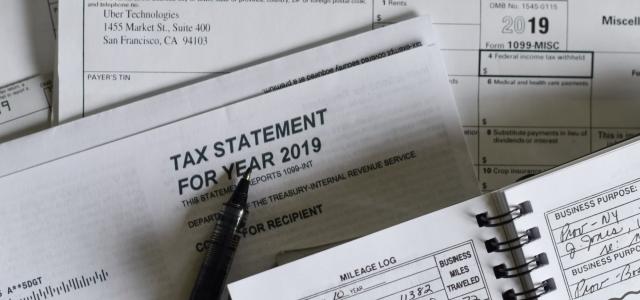
Roth IRA Conversions in Retirement: A Powerful Tax Strategy for the Right Situation
When it comes to retirement planning, Roth IRA conversions are often overlooked—but they can be a powerful tool when used intentionally. If you’re already retired, you might wonder: Why would I add to my taxable income now? But under the right circumstances, a well-timed Roth conversion can reduce your long-term tax burden, help with estate planning, and even lower your required minimum distributions (RMDs).
Let’s walk through why Roth conversions are worth considering in retirement, what to watch out for, and how to use this strategy without triggering unintended tax consequences.
Why Would a Retiree Convert to a Roth IRA?
The main reason? Tax-free growth.
Traditional IRAs are funded with pre-tax dollars. That means when you take money out, you’ll pay taxes on those distributions. Roth IRAs, on the other hand, grow tax-free—and qualified withdrawals are tax-free too. So by converting some of your Traditional IRA into a Roth, you’re essentially paying taxes now to avoid potentially higher taxes later.
But this decision isn’t just about your current tax rate. It’s also about who might end up paying taxes on those funds in the future—you, your surviving spouse, or your heirs. Here’s how it plays out:
- If you convert funds during a lower-income year, you may be able to “fill up” your current tax bracket without bumping into the next one.
- If you leave your IRA to beneficiaries, and they’re in their peak earning years, they may be forced to take large, taxable withdrawals under the 10-year inheritance rule. Converting now may save them from a bigger tax hit later.
How RMDs Factor In
Once you turn 73 (or 75, depending on your birth year), you’ll be required to take minimum distributions from your Traditional IRA—even if you don’t need the money. Those RMDs are taxed as income and can increase significantly as you age.
By converting some of your Traditional IRA to Roth dollars before RMDs begin, you reduce the size of the account subject to forced withdrawals. That means smaller RMDs and more flexibility in managing your taxable income down the road.
A key point: if you're already taking RMDs, you must take your required distribution first before doing a Roth conversion. You can’t just convert your RMD amount—that’s a common misconception.
Why Consider Partial Conversions?
Rather than converting your entire IRA at once (which could cause a major spike in taxable income), many retirees opt for partial conversions—a strategy where you move smaller amounts over several years.
This can help you:
- Stay within a comfortable tax bracket
- Reduce future RMDs gradually
- Start the five-year clock on multiple Roth conversions (each one has its own timeline)
- Adapt to changing income, health, or estate planning needs
In fact, many retirees wait until late in the calendar year to decide how much to convert. By that point, you have a clearer view of your total income, unexpected windfalls, or capital gains. It’s a smart way to fine-tune your tax strategy.
When a Roth Conversion Might Not Be the Right Move
This isn’t a one-size-fits-all strategy. There are a few red flags that might mean a Roth conversion isn’t in your best interest:
- You need the money soon: Roth conversions are subject to a five-year waiting period before funds can be withdrawn penalty-free.
- You’re in a high tax bracket now: Paying taxes on a conversion during a high-income year could cost more than it’s worth.
- You’re unprepared for the ripple effects: A large conversion can increase your Medicare premiums, impact Social Security taxation, and even trigger other tax thresholds.
That’s why this decision should always be reviewed in the context of your entire financial picture.
Smart Practices for Roth Conversions
If you’re thinking about converting, here are some tips:
✔ Work with both your financial advisor and CPA
Your advisor can help forecast the long-term benefit. Your CPA will help you avoid surprises this year. Ideally, both should be on the same page.
✔ Plan for liquidity
Make sure you have enough cash on hand to pay the tax bill. You don’t want to dip into your retirement funds just to cover taxes.
✔ Revisit annually
Tax laws, personal circumstances, and market performance all change. Reassess Roth conversion opportunities each year.
✔ Consider life events and state taxes
Are you planning to move from a no-income-tax state to one with high income taxes? Converting while still in the tax-friendly state could save you thousands.
✔ Think through estate planning
If you're married, converting while both spouses are alive can help you take advantage of joint tax brackets before the surviving spouse is taxed as a single filer—a scenario known as the “widow(er)’s penalty.”
Final Thoughts
Roth conversions can be a game-changing tool for retirees—but only when used wisely. They can help you:
- Reduce lifetime taxes (for you and your heirs)
- Control RMDs
- Optimize your retirement income strategy
But they’re not for everyone. The best approach is often a measured, year-by-year review that balances current tax costs with long-term benefits.
If you’re wondering whether a Roth conversion makes sense for you, we’d be happy to sit down, run the numbers, and coordinate with your tax professionals. The goal? Making your money work smarter for you—and the people you care about most.





